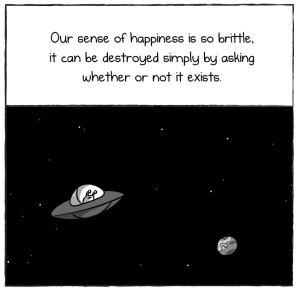
It’s a scary time for the LGBTQIA+ community. The current political turmoil has caused many trans and non-binary individuals to feel unsafe, invalidated and unseen. Any therapist who has been paying attention to the news knows about a recent Supreme Court ruling, involving a certain cakeshop in Lakewood.
It is now acceptable for businesses to turn away queer customers if their religious beliefs indicate that their gender identity or sexual orientation is sinful. Therapists are permitted to do it too. This adds to the level of anxiety that a Queer-identified client will have, when they call us requesting services.
Most therapists I know are not homophobic or trans-phobic. In fact, many of them have great empathy for individuals who are marginalized. They may have even marched for their rights, or called their elected officials on their behalf. Yet, as someone who has networked and consulted with many clinicians in the community, I know numerous well-meaning clinicians who refer queer clients, not because of any negative attitudes toward these people, but because they are not a specialist.
These clinicians are usually very committed to working within their scope of practice. Such a commitment is admirable. It may seem radical that I am about to challenge it, but here I go: I am envisioning and hoping for a paradigm shift, in which queer competency stops being a “specialty” and becomes part of basic clinical training. We’re not there yet, but you can help me get the ball rolling.
Consider this: Queer clients are not a “specialty”, they are a population, just as People of Color or People with Disabilities are a population. LGBTQIA “issues” are not a condition to be treated. Therefore, there is no specific protocol to treat them. The techniques that you already have will work, as long as your good intentions are backed up by an awareness of power, privilege and social justice issues that arise in counseling.
If you are a cisgender, heterosexual therapist who is committed to understanding how your privilege affects the counseling relationship, and holding the space when transference arises due to that privilege, you can see these clients, if they feel comfortable seeing you. If you lack experience, there is plenty of consultation available, and it is well worth the cost of getting a little extra training so that you can see these clients who have difficulty accessing services.
Therapists are often the “gatekeepers”, who must provide a mental health evaluation for a trans client to receive hormones or surgery. A trans person who cannot receive that evaluation sometimes cannot receive the medical treatment that they need. If there isn’t a therapist who is a “specialist” nearby, then this becomes a barrier to medical transition.
Ouch, right?
Fortunately, Denver has a number of queer-identified and queer-affirming clinicians who can help. Many queer clients seek out therapists who also identify as queer. If you are not part of that community, it may be that you rarely get calls from clients who are.
But sometimes you will. Perhaps there is a trans client who wants Somatic therapy, and there are no queer-identified somatic experiencing practitioners in the local directory. You might find a lesbian couple who has heard wonderful things about emotionally focused couples therapy, and you are the only therapist in their neighborhood who is trained in that method. You have the opportunity, not just to help these individuals, but to be a true ally. Your mission, (I hope you choose to accept it) is to educate yourself, so they don’t have to educate you. Educating yourself is part of your job description. If you are like me, you already read countless clinical books and spend a lot of money on workshops. Next time you go over your budget for all those CEUs that you have to get anyway, add some queer-competency to your agenda.
Here’s your “to do” list:
– Find a trans specialist and get some consultation on how to write a WPATH letter. Go ahead. Google it. I’ll wait. There you go.
– Call a local LGBTQIA support organization and find out when they are offering workshops for clinicians. May of these organizations will do it for cheap or even free, because this population is so sorely underserved.
– Take an anti-oppression training. Show up with curiosity and humility. Fully engage with it, and let yourself be challenged.
– Read books written by queer authors, where they describe their experience in their own words. There are very few clinical textbooks for therapists who want to work with this population. You are going to learn most of what you need to learn from hearing the stories of queer people in their own voices.
Even after you have done these things, you still might not want to call yourself a “specialist”. Be honest with LGBTQIA clients who call about how much experience you do, or do not, have working with people like them. Be respectful. Don’t forget to ask their pronouns, and tell them yours. If they decide not to see you, don’t take it personally. But please, consider making your practice a safer place for queer clients to land, if they DO want to see you. These are difficult times. You have the opportunity to be on the rights side of history, and do a world of good.







